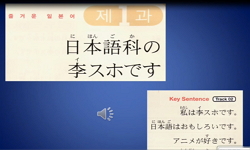일본에서는 급속한 노인인구가 증가로 인해 노인요양 문제가 대두되었고 이 문제를 해결하기 위하여 사회보험방식의 개호보험제도가 2002년 4월에 시행되었다. 일본의 개호보험제도는 기존...
http://chineseinput.net/에서 pinyin(병음)방식으로 중국어를 변환할 수 있습니다.
변환된 중국어를 복사하여 사용하시면 됩니다.
- 中文 을 입력하시려면 zhongwen을 입력하시고 space를누르시면됩니다.
- 北京 을 입력하시려면 beijing을 입력하시고 space를 누르시면 됩니다.
https://www.riss.kr/link?id=T10070160
- 저자
-
발행사항
서귀포 : 탐라대학교 정책개발대학원, 2004
-
학위논문사항
학위문헌(석사) -- 탐라대학교 정책개발대학원 , 사회복지학과 , 2004. 8
-
발행연도
2004
-
작성언어
한국어
- 주제어
-
KDC
338 판사항(4)
-
발행국(도시)
제주특별자치도
-
형태사항
ii, 72p. : 삽도 ; 26cm.
-
일반주기명
참고문헌: p. 66-70
-
소장기관
-
0
상세조회 -
0
다운로드
부가정보
국문 초록 (Abstract)
일본에서는 급속한 노인인구가 증가로 인해 노인요양 문제가 대두되었고 이 문제를 해결하기 위하여 사회보험방식의 개호보험제도가 2002년 4월에 시행되었다. 일본의 개호보험제도는 기존의 행정이 서비스 대상자 및 내용을 결정하는 조치제도에서 사회보험방식에 의해 필요한 서비스를 이용자가 자유롭게 선택하고 계약에 의해서 서비스를 받을 수 있는 구조로 전환한 것이다.
본 논문은 일본의 개호보험이 발생하게 된 사회■경제적 배경 및 특성을 살펴보고 개호보험 제도의 문제점 및 향후의 정책과제에 대하여 기술하였다. 또한 일본의 경험을 통하여 한국의 공적요양보장체계 수립의 정책방향을 도출하는데 연구목적을 두고 있다.
일본 개호보험은 특징은
1) 보험자가 시·정·촌 이며,
2) 피보험자는 65세 이상의 노인(제1호 피보험자)과 40세 이상 64세까지의 장애를 가진 개호대상자(제 2호 피보험자)를 피보험자로 한다. 일본의 개호보험의 수급자는 개호에 소요되는 총비용의 1할을 본인이 부담하도록 되어 있다.
3) 재원조달은 사회보험과 조세의 혼합방식을 취하고 있다. 재원의 50%는 피보험자로부터 갹출되고 중앙정부가 25%, 광역자치단체와 기초자치단체가 각각 12.5%씩 재정 지원을 하고 있다.
개호보험제도는 비교적 순조롭게 진행되고 있다는 평가이지만 해결해야 할 여러 가지 문제점 및 과제를 지니고 있다. 제기된 주요 문제점으로는 요개호 인정 방법, 개호의 질적관리, 개호지원 전문인, 저 소득자의 문제, 현금급여의 문제 등이다.
한국은 고령화 시대의 장기요양에 대한 요구를 충족시키기 위하여 일본의 경험을 바탕으로 다양한 서비스를 개발할 필요가 있다. 한국은 정책의 우선순위, 공적요양보장 제도의 도입 시기, 공공과 민간의 책임분담, 가족의 역할, 전달체계의 하부구조, 보건의료와 사회적 개호의 조정 문제에 대하여 신중히 고려해야 한다.
다국어 초록 (Multilingual Abstract)
The demand for long term care was expected to increase as a result of a rapidly ageing population in Japan. Japan introduced a compulsory social insurance program for its long-term care insurance system since April 2000. The system transformed from a ...
The demand for long term care was expected to increase as a result of a rapidly ageing population in Japan. Japan introduced a compulsory social insurance program for its long-term care insurance system since April 2000. The system transformed from a service for the elderly on a basis of administration convenient policy into a service on a contract basis.
This paper examines the social and economic background that gave birth to long-term care insurance in Japan. It also makes clear the basic characteristics of the system and discusses the issues to be overcome and the future prospects of the system. The purpose of this study is to search for desirable policy directions for long-term care in Korea.
The main structural framework of the financing and delivery system of long-term care insurance(LTCI) in Japan are as follows.
1) The insurers are municipalities.
2) Those insured over the age of 65 are defined as the primary insured and those with disabilities in the age bracket of 40 and 64 are defined as the secondary insured. Beneficiaries are required to pay a co-payment, which is 10% of the benefit.
3) The Japanese LTCI program is financed through a combination of social insurance contributions and taxes. Contributions from the insured comprises only a half of the funding and 25 percent is paid by the central government and 12.5 percent each by prefectures and municipalities.
Although the system has started smoothly without serious problems, there are a lot to overcome to build firm foundations for the provision of necessary services. The following are some of the important issues and tasks to be tackled with in order to improve the system for the future. In particular, the eligibility assessment for benefits, the quality care management, care manager problems, low income group and cash benefit problems and so on.
The Korean society needs to respond to the elderly and long-term care needs and develop a variety of services from lessons and experiences learned from Japan.
Korea should seriously take into account the policy priority, the nature of risk, the optimal timing of introduction, the share of public and private responsibility, the role of the family, the infrastructure of the delivery system and the coordination between health and social care.
목차 (Table of Contents)
- 논문초록
- 목차 = i
- <표차례> = ii
- <그림차례> = ii
- I. 서론 = 1
- 논문초록
- 목차 = i
- <표차례> = ii
- <그림차례> = ii
- I. 서론 = 1
- 1. 문제제기 및 연구의 목적 = 1
- 2. 연구의 범위 = 3
- 3. 연구방법 = 4
- II. 개호보험의 개념 및 수립과정 = 6
- 1. 개호보험의 개념 = 6
- 2. 개호보험제도의 필요성 = 7
- 3. 개호보험의 발전과정 = 13
- III. 개호보험의 내용 및 현황 = 19
- 1. 적용대상 = 19
- 2. 급여내용 = 20
- 3. 전달체계 = 29
- 4. 재원조달 = 37
- IV. 개호보험제도의 문제점과 과제 = 42
- 1. 개호보험제도의 문제점 = 42
- 2. 향후 개호보험제도의 정책적 과제 = 48
- V. 우리나라 공적요양보장제도에 주는 시사점 = 54
- 1. 우리나라 공적요양제도의 기본방안 = 54
- 2. 정책적 시사점 = 57
- VI. 결론 = 64
- <참고문헌> = 66
- ABSTRACT = 71











